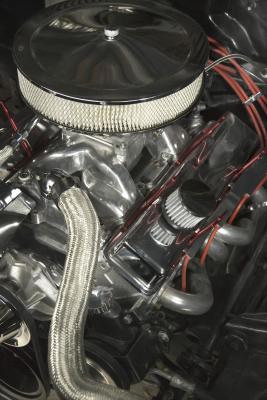
Valve springs, as a whole, are underrated in terms of importance to the engine and priority where rebuilds are concerned. Valve springs are what keep the valvetrain dancing in tune to the camshaft, and they do wear out over time. The results vary from a mildly irritating surging to catastrophic failure depending on the mode and location of failure.
Valve springs are so simple that they don't seem like they should wear out, but they eventually go bad just like the springs in the suspension. The basic problem has to do with heat cycling and tempering. A metal's stiffness is a function of the shape of its crystalline matrix, which is a function of how the metal is cooled at the factory. When you cool very hot metal very quickly, you cause the crystals to seize up, which makes the metal very hard but brittle like glass. Getting the metal up to a lower temperature and slowly cooling it softens the material, making it easier to bend. A constantly bouncing spring builds up heat like a paperclip bent back and forth; after millions of heating-cooling cycles, the spring will re-temper and gradually lose its stiffness.
As long as they don't snap a connecting rod first, all engines experience valve float at a certain rpm. Your engine's camshaft pushes its valves open via the lifters, pushrods, rocker arms or cam follower, depending on the design. The valves depend on those springs to push them back up, keeping the lifters or followers in contact with the cam. At high rpm, the valve's inertia overcomes the valve spring, keeping the valve open instead of pushing it up against the cam. Heavier valves float at a lower rpm because they have more inertia and fight harder to remain open; this is why high-end race engines often use valves made of a lightweight alloy, or employ hollow valve stems to reduce mass.
This isn't uncommon on older engines. Valve springs, for the most part, are pretty much the same, and they wear out through heat cycling at approximately the same rate. Over time, the engine starts to lose power at high rpm, and its rpm limit drops as valve float becomes the determining factor. At that point, it may abruptly stop in rpm rise or may surge, depending upon the engine. While horsepower loss at high rpm isn't fun, it is a somewhat self-limiting thing. Once the valves start to hover off the seats by as little as 0.10 inch, the rpm rise stops and the valves don't rise any farther. This is a good thing; if rpm were to keep rising past the low valve-float point, the pistons might hit the valves and annihilate the motor.
This isn't a phenomena unique to valve float, since it also can happen as a result of timing and fuel injection malfunctions. It is something to pay attention to, since it can precede a major failure. Backfires happen when valve float keep the valves open longer than than they should, allowing combustion gases to race out of the cylinder and into the intake manifold. Such backfires are more likely on carburated and throttle-body-injected engines than modern multipoint engines, because the MPI system doesn't inject fuel until after the combustion event. A weak exhaust valve can allow fuel to escape the cylinder and go into the exhaust manifold, resulting in an exhaust backfire.
A weak valve spring on a single cylinder could easily destroy your motor if it's an interference type motor -- where the pistons may hit the valves. Whereas an engine-wide valve spring failure limits rpm, failure of a single valve spring allows the motor to zing up to high rpm and float the bad valve until it hits the piston. On computer-controlled cars, a stuck exhaust valve and the subsequent excess exhaust fuel may overheat the converter, and triggers a check-engine light with codes for misfire and a rich reading from the oxygen sensor. A stuck intake valve will, at the very least, spike pressure in the intake manifold, confusing the manifold pressure sensor and throwing the computer into fits.